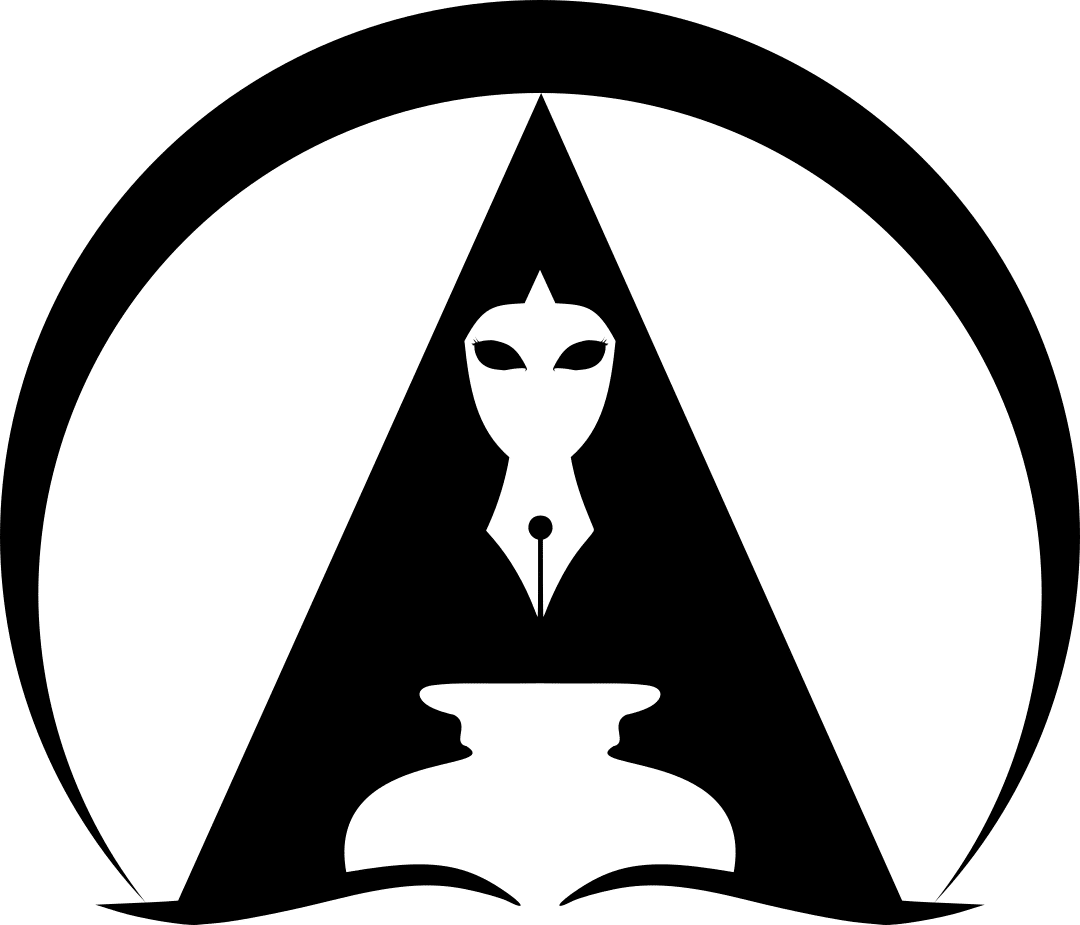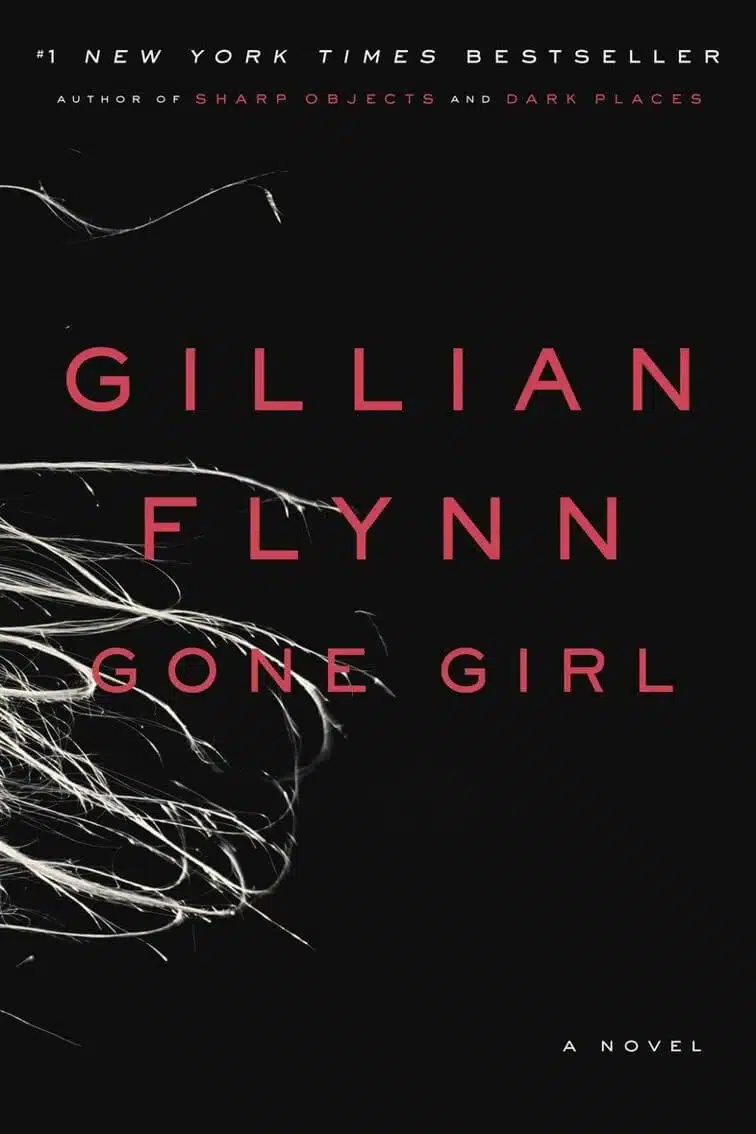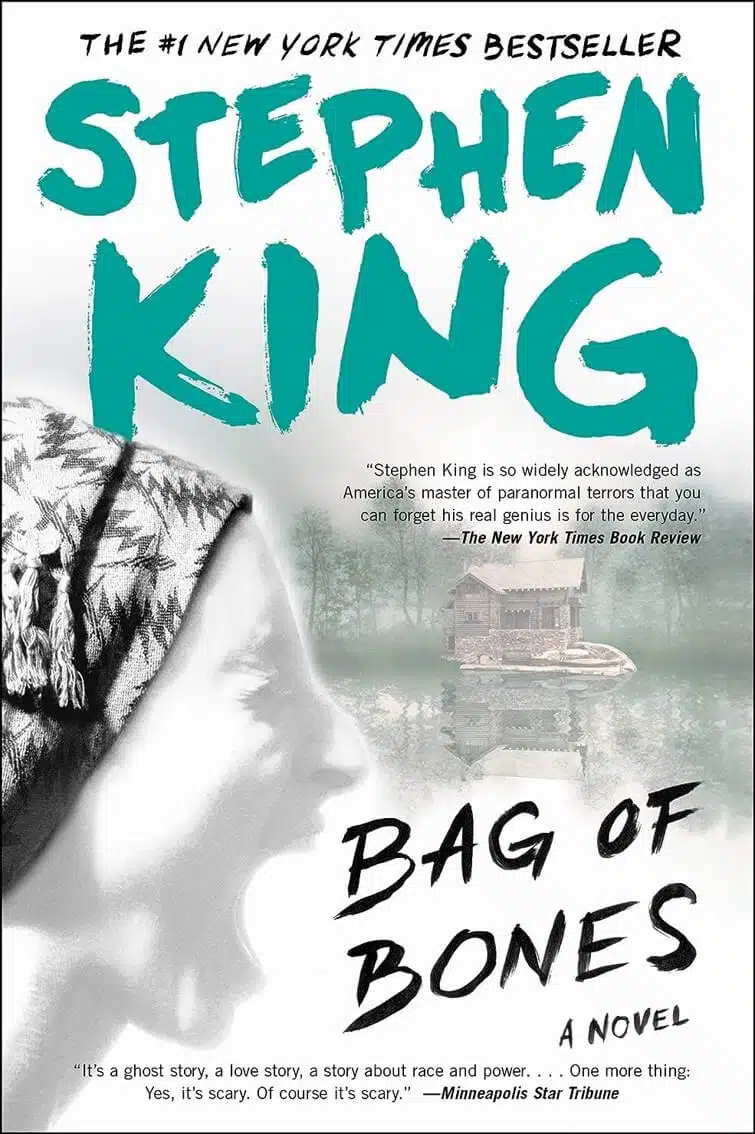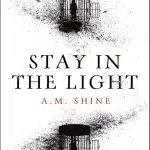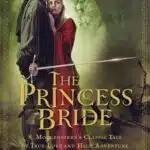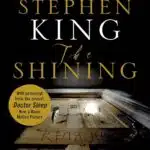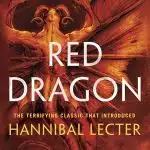Introduction
Writing a novel is easy, right?
I mean, it’s hardly rocket science. You take your story idea, write down everything that unfolds in chronological order, plaster on a book cover, then send it off to get published. Now all you have to do is sit back with some bubbly and wait for your bestseller to fly off the shelves while the cash rolls in. Job done.
I seriously hate to burst your bubble here, but writing a novel isn’t quick, easy, or always fun, and if you’ve ever tried your hand at writing a novel, you’ll agree that it’s not quite that simple.
Writing a novel requires time, dedication, and a whole lot of coffee. And this process can be downright daunting, especially if you’ve never done it before, so it’s not surprising that few people actually finish their first draft.
But don’t let that discourage you, it isn’t all doom and gloom! And lucky for you, I have spent an exorbitant amount of time scouring the internet to bring you the most comprehensive guides, advice, tips, tricks, and writing resources on how to write a novel from start to finish to make this process as easy and painless as possible.
This post is in-depth and the size of a short story (not kidding, I’m a writer after all), so pour yourself a cuppa, get comfy, and let’s dive in on how to write a novel in 15 steps, shall we?
Step 1: Know What You Write and Why
Before you even begin to think about writing, you first need to know what you want to write and why you want to write it. This may seem like an obvious step, but it’s surprising how many people start writing without really understanding what it is they’re trying to say, or who they are trying to say it to.
For starters, do you want to write fiction or nonfiction? Because although the words “novel” and “book” are sometimes used interchangeably, there is a significant difference.
A book is any physical object that contains a set of printed sheets of paper bound together in one spine. A novel is a book-length work of fiction, and a book can either be nonfiction (factual) or fiction (made up). So, all novels are books, but not all books are novels.
Then there are the different types of genres to keep in mind. There are quite a few genres to choose from, but a novel doesn’t have to fit into any one genre. It can be a mix of different genres (subgenres), or it can be one genre all on its own.
Here are a few of the most popular main fiction genres:
- Adventure: This genre typically features high-stakes plots with lots of excitement, danger, and suspense.
- Fantasy: This genre takes place in a world that is different from ours, often with magical or supernatural elements.
- Horror: This genre is designed to evoke fear in the reader, often through suspense, violence, and gore.
- Mystery: This genre is all about the clues and suspenseful reveals, as the reader tries to figure out “whodunit”.
- Romance: This genre is all about the love story, and typically features a “happily ever after” ending.
- Science Fiction: This genre typically explores the future, and often includes elements of science and technology that are not yet possible.
- Thriller: This genre is designed to keep the reader on the edge of their seat, with lots of suspense, action, and danger.
- Young Adult: This is a category of fiction (not a genre), but I’ve added it to this list because it is so popular. Young Adult is written for readers from twelve to eighteen years of age, and often features protagonists that are still in the process of finding themselves.
Then, of course, there are the different forms of fictional stories based on their average word count:
- Microfiction: 100 to 300 words
- Flash Fiction: Up to 1,000 words
- Short Story: 1,000 to 10,000 words
- Novelette: 10,000 to 20,000 words
- Novella: 20,000 to 40,000 words
- Novel: 40,000 to 120,000 words
The difference between fiction and nonfiction, what you want to write, and why you want to write it, are all important questions to ask yourself before you begin as they will help guide and shape your story, and they will affect the choices you make during the writing process.
Here are a few questions to ask yourself:
- Do you want to write about something factual or fictional?
- Are you writing a novel because you have a great story idea and want to share it with the world?
- Are you writing a novel to explore a particular issue or theme that’s important to you?
- Are you writing for your own enjoyment, or do you hope to publish and make a career out of writing?
- What genres do you like to read?
- What genres do you like to write?
- Do you want to write a literary masterpiece or a commercial bestseller?
If you’re not sure of the answers, that’s okay too! The goal here is to start brainstorming and thinking about what you want your novel to achieve or what you want to accomplish as a writer.
Whatever it is that drives you, remember to focus on it as you write.
Step 2: Create the Perfect Writing Space
When I say “perfect” writing space, I mean that it must be perfect for you. It might be a secluded corner in your home where you can write in peace, or it might be a bustling coffee shop with people around to help get those creative juices flowing. It really doesn’t matter, as long as it helps you get into the writing zone. The key here is to find what works for you and stick with it, because where you write influences how you write.
But wherever you decide to set up your writing space, make sure it is a place where you are comfortable and can focus on writing without distractions. Every part of your writing space should be set up to help you write more efficiently and effectively. This include turning off your phone, putting away any other work you might have, and staying away from the internet.
If you want to make writing your profession, then treat it like one.
So, take a look around your writing space. Does it have everything you need to get the job done?
Here are a few things to consider:
- Get a decent chair that won’t leave your back aching and your buns numb after long hours of writing.
- Make sure your desk is uncluttered and at a comfortable height with enough space for all your writing equipment and supplies.
- Writing in natural light is best, but if that’s not possible, make sure you invest in good lighting, so you don’t strain your eyes.
- Keep a stash of snacks and drinks close by to keep your energy up.
- Make sure there aren’t any distractions in your writing space that can pull you away from your work.
Step 3: Set Aside a Specific Time to Write
Let’s face it: writers are a procrastinating bunch. We will do anything to avoid sitting down and getting those words on the page. We will clean the house, wash the car, walk the dog—anything to put off writing for one more minute.
The problem is, of course, that eventually we must write. The blank screen won’t stare at itself and even the most dedicated procrastinator will eventually run out of things to do.
This is why I cannot stress enough the importance of setting up a writing schedule. It should become part of your daily routine, like brushing your teeth or sitting down for a meal. Not only will it help you get into the writing groove, but it will also help you stay on track and meet your writing goals.
Ideally, you should set aside the same time each day to write. Whether it’s first thing in the morning, after the kids go to bed, or during your lunch break, make sure you carve out some time for yourself to write.
Of course, setting aside time to write is only half the battle. Once the allotted time has begun, it can be all too easy to get sidetracked. But remember, this time is sacred and reserved for writing, and nothing else. That means no social media, no watching TV, no playing video games.
Nothing but writing. And once you start writing, don’t stop until the timer goes off.
The goal is to get into a writing habit and build up some momentum. If you can’t find the time to write every day, then at least try to set aside a few hours each week. That’s better than nothing.
Step 4: Come Up with a Story Idea
This is arguably the hardest step of the writing process for most people, and not because coming up with an idea itself is difficult, but because it’s hard to know if your idea is any good. Not only should your story idea be big enough to carry an entire novel, but it should also be compelling enough to stand out to readers in an ever-growing market.
Your story idea should be exciting with lots of possibilities for tension and conflict. If you are bored by your story, chances are, your readers will be too. I highly recommend reading lots of books in your genre and taking notes on what you like and don’t like about them.
So how do you come up with a story idea that’s interesting, complex, and unique? You could start with a character and figure out what kind of trouble they might get into. Or you could choose a setting and build a story around that. You could even start with a plot point (beat or event) and work backwards from there.
Here are a few more tips to help you get started:
- Use pictures, movies, articles, and world news as inspiration for your story idea.
- Take a genre or story idea that you love and come up with a new twist on it.
- Ask yourself a lot of “what if” questions. What if the world was turned upside down? What if a character had a superpower?
- Write what you know and what you are passionate about. Draw from your family, friends, or your own personal experiences.
- Write the story you’d like to read. If you’re a fan of mystery novels, write a mystery novel. If you love romances, write a romance novel. Don’t be afraid to bend the genres and combine a few of them.
Need a little more inspiration? Try one of my 100+ story ideas and prompts to get you started.
Step 5: Outline and Structure Your Novel
Outlining and structuring your novel may seem like the same thing, but they are two very different processes. Outlining is the process of planning out your story, and structure is the framework that holds your story together.
Outlining
Outlining (what happens in your story) is the process of brainstorming all the elements of your story, from the beginning to the end, even if you envision your novel to be nonlinear as opposed to a traditional linear story. This can be done with a simple bullet point list, or it can be a more detailed scene-by-scene breakdown. The important thing is that, by the end of the outlining process, you have a clear idea of what happens in your story and how it all fits together.
First, you’ll want to figure out whether you’re a plotter or a pantser. A plotter (outliner) plans out the story before beginning to write, while a pantser “writes by the seat of their pants” and starts writing without knowing what will happen next.
There are pros and cons to both methods, but for most people, planning out a story ahead of time can be helpful in ensuring that all the necessary plot points are hit and that the novel stays on track.
How much you want to plan out your novel before you write however, is up to you. But in my opinion, it is helpful to at least have a basic idea of where the story is going. Not only will this help you stay focused and avoid writer’s block, but also save you rewriting chapters, or even the entire novel, later on.
Here’s how to get started:
- Write down your story idea in one sentence and turn it into a premise. This will be the foundation for your entire novel’s outline.
- Ask yourself questions about your story: Who is your main character? Where does your story take place? When does your story take place? What is your story about and why does it matter?
- What does your character want? Why does your character want it? What or who is standing in your character’s way?
- What are the rules of your world? What is the history? How does your world or setting affect your characters and plot?
- Brainstorm all the different scenes or main events that need to happen in order for your story to progress and organize them in chronological order.
Some popular outline methods include:
- Synopsis Outline
- In-Depth Outline
- Index Card Outline
- Mind Map Outline
- Snowflake Outline
Structuring
Structuring (how it happens in your story) is the technique of applying accepted theories of storytelling to give your story its best shape and form. There are many different ways to structure a novel, but the purpose is to ensure that your readers don’t get bored or confused halfway through. It keeps your story moving forward by guiding you through “how” your “what” needs to happen.
As with outlines, there are many different ways to construct a story, but most can be boiled down to a few basic, although essential, elements:
- Status Quo: Referring to the “existing state of affairs”, this is an introduction to your protagonist’s world and normal everyday life before it is disrupted. If nothing happens and everything stays the same, you’d have no story to tell.
- Inciting Incident: The event that sets the story in motion and gives the protagonist a goal to pursue. It is often brought on by conflict or crisis, which raises the stakes and drives the plot forward.
- Rising Action: Here is when the conflict begins to take shape and the protagonist is pitted against external forces. This is typically when the story starts to get interesting, as the reader becomes invested in whether or not the protagonist will be able to overcome the challenges they face.
- All is Lost: This is the point where the protagonist realizes that all hope is lost, and they must face their impending doom. It is a moment of shock and despair, followed by a surge of determination as the protagonist resolves to go down fighting.
- Resolution: Often referred to as the “denouement”, which means “the end”, is the part of the story where everything is wrapped up and all loose ends are tied. It’s the happy ending where the good guys win, and the bad guys lose. Or not.
Some popular novel structures include:
- Three Act Structure
- Save the Cat Beat Sheet
- Seven Point Structure
- Fichtean Curve
- The Hero’s Journey
- Freytag’s Pyramid
So, why do I put what should clearly be two different steps together as one? Because:
- You don’t have to outline your novel, but you do need to structure it.
- A lot of beginner writers think that outlining their novel and structuring their novel is the same thing, and since they don’t have to outline their novel, they end up doing neither.
- If you use these two methods together, you can speed up the process and create a very solid novel, regardless of whether you are a plotter or pantser.
Step 6: Create Unforgettable Characters
Your characters are the lifeblood of your story. They are the ones who drive the plot forward and make things happen. If your characters are flat or one-dimensional, your readers will quickly lose interest. But if you take the time to create well-rounded, believable characters, your readers will be drawn in and invested in their fate.
But how do you create a well-rounded, believable character? By making them relatable, distinctive, and compelling, of course!
We all want to see a little bit of ourselves in the people we read about, so make sure your character has some flaws and vulnerabilities. No one is perfect. They should be the kind of person that people either love, or love to hate. Your character should be unique and stand out from the crowd in some way, whether it’s their physical appearance, their background, or their quirks. And whether they’re striving for power or simply trying to make it through the day, your readers should be invested in their journey.
If you can create a character with these qualities, then you’re well on your way to creating someone who will stay in your readers’ hearts long after the book is closed.
Here are a few things to consider when creating your characters:
- Characters should be consistent and believable. They should never do or say things that are out of character for them.
- Characters should have their own goals, motivations, and backstory. Why do they want what they want? How far will they go to get what they want? What do they actually need?
- Characters should be sympathetic. Even the villains should be relatable and understandable, even if we don’t agree with their actions.
- Characters should change and grow over the course of the story. As they encounter new challenges and experiences, they should evolve and become different people.
Step 7: Create Vivid Settings
Your story should take place in a world that your readers can imagine themselves in, whether it’s the concrete jungle of New York City, a small cabin in the middle of a forest in New Zealand, or a fantastical world of your own creation. Your setting should be rich and detailed, with its own history, culture, and climate, a sense of place that goes beyond the simple description of locations and events.
Use all five senses to immerse your readers and make them feel like they’re right there in the thick of things. Your setting should be a character in and of itself, one that your readers will love to explore. What does the city sound like? What does the forest smell like? Does it hurt when the poisonous vines in your world wrap around your character’s ankles? What can they see? What can they taste? Paint a picture with your words.
Here are a few things to consider when creating settings:
- Make sure the setting is believable and fits with the time period and genre of your story.
- Your setting needs to support your story. A rich and spoiled princess trying to take over her father’s empire won’t fit in a small New York City apartment.
- Settings can influence your character’s actions and moods so make sure to use your setting to create conflict.
- Use your character to reveal the world. People perceive things differently.
Step 8: Establish Goals, Conflicts, and Stakes
Every good story has goals, conflicts, and stakes. It’s what drives the plot and keeps your readers engaged. But not just any conflict will do, and your story should have high stakes, which means that the outcome of the conflict should matter to your characters and your readers. If the stakes are low, then there’s no tension and no suspense. The conflict needs to be important, life-or-death, do-or-die kind of stuff.
Your readers should be worried about your characters. Will they make it out alive? Will they succeed in their quest? What will happen if they don’t? Make sure to raise the stakes as the story progresses and keep your readers on the edge of their seats.
But before I can show you how to do this, I need to explain what it is:
- Goal: What the character wants.
- Conflict: The obstacle that stands in the way of achieving the goal.
- Stakes: The consequence of failing to achieve the goal.
Sounds simple enough, but what gets most beginner writers utterly confused, is that all three of these have more than one purpose.
Goals
Story Goals: The big, overarching goal that the protagonist is striving for. This is what drives the plot and should be something that’s important to both the protagonist and the reader.
Plot Goals: The smaller goals that the protagonist needs to achieve in order to reach the story goal. These are usually more immediate and should be clearly defined.
Conflicts
External Conflicts: The struggles the protagonist is experiencing with other characters or in the environment on a physical level.
Internal Conflicts: The struggles the protagonist is experiencing within themselves on a mental or emotional level.
Stakes
Story Stakes: The consequences the protagonist faces if they don’t achieve the story goal. Again, this is usually something that’s important to both the protagonist and the reader, such as the fate of the world.
Personal Stakes: The consequences the protagonist faces if they don’t achieve their goal. This is usually something that’s important to the character, such as their life, their loved ones, or their honor.
Now that you understand what these are, let’s look at how to use them:
- The goals need to be defined, concrete, and difficult, but achievable. Make your protagonist work for it. The reader should be able to understand what it is and see progress being made towards it.
- The conflicts need to be between the protagonist and an obstacle that’s standing in their way. The reader should never be confused about who the protagonist is fighting against or what they’re trying to achieve.
- The stakes need to be high, otherwise there’s no tension or suspense. The consequences of failing to achieve the goals need to be serious and important to both the protagonist and the reader.
Step 9: Choose the Right Point of View and Verb Tense
Point of view (POV) and verb tense is one of the fundamental elements of a novel. Both point of view and verb tenses can have a profound impact on the way readers experience the story.
Point of View
Point of view is the “narrative voice” or “camera’s eye” through which you tell the story.
There are three basic types of point of view and each perspective has its own strengths and weaknesses that can be used to achieve different effects, so it’s important to choose the one that will best serve your story and your goals.
The three basic points of view are:
- First Person
- Second Person
- Third Person
First Person Point of View
First person point of view is told through the eyes of the protagonist and is written in the “I”, “me” and “we” voice. It is intimate and engaging, allowing readers to experience the story firsthand through the eyes of the main character. Although first person point of view can be used to create a strong connection with the protagonist and draw readers into the story, it can also be limiting as it restricts the narrator’s perspective to that of a single character. In other words, the reader can only know and see what the protagonist knows and sees.
Second Person Point of View
Second person point of view is written in the “you”, “your”, and “yours” voice and tells the story as if it’s happening to the reader. It is unique, experimental, and can be used to create a very strong connection with readers by putting them right in the middle of the action. However, it can also be extremely difficult to pull off and can quickly become confusing and frustrating for readers if not done correctly.
Third Person Point of View
Third person point of view is told through the eyes of an unspecified narrator who is not a part of the story and is written in the “he”, she”, “it”, and “they” voice. It provides a wider perspective than first or second person point of view, giving readers a detached and objective view of the story. This can be helpful for exploring complex characters or intricate plotlines, but it can also make the story feel distant and cold.
There are three main types of third person points of view:
- Third Person Limited
- Third Person Omniscient
- Third Person Objective
Third Person Limited Point of View
This point of view is the most common type of third person point of view. It tells the story from the perspective of a single character, usually the protagonist, and restricts the narrator’s perspective to that character’s thoughts, feelings, and experiences. This provides readers with a more intimate and personal view of the story.
Third Person Omniscient Point of View
This point of view is less common than third person limited point of view, but it can be used to provide a more expansive and all-encompassing perspective on the story. The narrator has access to all the characters’ thoughts and feelings, allowing them to reveal hidden motivations and secrets, and explore the characters’ inner lives in depth. This can be helpful for developing complex storylines and revealing important backstory. However, it can also be confusing and overwhelming for readers if used indiscriminately.
Third Person Objective Point of View
This point of view is the most detached and impartial of all the third person points of view. The narrator is not a character in the story and does not have access to any of the characters’ thoughts or feelings. This can be helpful for keeping the focus on the plot and avoiding excessive introspection, but it can also make the story feel cold and emotionless.
Verb Tense
Verb tenses influence the point of view and play a crucial role in conveying the timeline and the reality of the events. They help in setting the tone, mood, and style of the narrative.
The verb tenses are:
Past
- Past Simple
- Past Perfect
- Past Continuous
- Past Perfect Continuous
Present
- Present Simple
- Present Perfect
- Present Continuous
- Present Perfect Continuous
Future
- Future Simple
- Future Perfect
- Future Continuous
- Future Perfect Continuous
For now, and to avoid getting you utterly confused, we will only look at the simple verb tenses for a basic understanding.
Past Tense
The past tense is the most common in novel writing and is used to describe events that have already happened. For example, “She walked to the store.” It can create a sense of immediacy while maintaining a clear narrative order. It’s the most common tense in novel writing due to its familiarity and simplicity.
Present Tense
Writing in the present tense means the events are happening now. For example, “She walks to the store.” This can create both a sense of immediacy and intimacy, making the reader feel as though they’re experiencing the events alongside the characters. It can be limiting, however, because everything is happening in real-time, leaving less room for reflections or understanding events from a future perspective.
Future Tense
The future tense describes events that will happen later. For example, “She will walk to the store.” It is less commonly used but can create a sense of anticipation or uncertainty. It’s often used for predictions or promises within a story, rather than narrating the entire novel.
Step 10: Research What You Write
Writing what you know is a good rule of thumb, but it’s not always possible (or desirable) to write about your own personal experiences. Sure, you want to draw on those emotions and sprinkle that into your story whenever possible, but if we always followed that to heart, we’d be limited to writing about our own lives and the things we’ve experienced first-hand. Fortunately, there are plenty of other sources to draw from when it comes to creating believable and engaging stories.
One of the best ways to add authenticity and depth to your writing is to do some research. The more you know about your topic, the more accurate and believable your story will be. You don’t need to know everything, and not everything you know will go into your novel, but it’s a good idea to have a general understanding of the subject matter and to make sure that your facts are correct. Readers will know.
If you’re writing a historical novel, for example, you’ll need to do extensive research on the period you’re writing about. If you’re writing a novel about vampires, you’ll need to know a lot about vampire mythology and folklore, even if most of what you write about comes from your imagination.
For your reader, your story needs to be believable, and if you get even one fact wrong, you can lose your credibility.
Step 11: Use the Right Writing Tools
Writing a novel is an epic journey that requires not just creativity and determination, but also a well-equipped toolbox. Just as a carpenter relies on the right hammer and nails, or a chef on the perfect utensils, or a painter on the ideal palette, so should a writer on the appropriate resources.
But let’s be clear: no tool will write your novel for you. There’s no magical software capable of turning a blank page into a bestseller overnight. Writing a novel is a deeply personal and creative process that requires dedication, discipline, and a lot of hard work. Like, a lot.
However, the right software and tools can certainly make the process smoother and more efficient. They can help you organize your thoughts, structure your plot, develop your characters, and even catch those pesky grammar mistakes. They can help you stay focused, provide valuable feedback, and keep your work organized. Some of them might even open doors to new ways of thinking about your story.
Keep in mind that every writer is unique, and what works for one might not work for another. It’s all about finding the tools that best fit your writing style and process. Try them out and see what works best for you.
Below, in alphabetical order, is a list of some of the most popular writing tools and resources that can support you in your writing journey.
Word Processors and Writing Software
- Atticus: A relatively new player in the writing software field, Atticus offers a streamlined, user-friendly interface for drafting and editing your novel. It also includes formatting options for self-publishing authors.
- LivingWriter: This cloud-based software offers smart outlining features and a distraction-free writing space.
- Scrivener: This software is designed specifically for long writing projects and offers a wealth of features for organizing your work, including a corkboard, outlining tools, and a distraction-free writing mode.
- Ulysses: This software combines a clean, distraction-free writing interface with a powerful document management system. Its seamless sync across devices makes it a favorite among Apple users.
Grammar and Style Checkers
- Grammarly: This tool not only checks your grammar and spelling but also provides suggestions for improving your writing style and tone.
- Hemingway: Named after the master of concise prose, Hemingway highlights lengthy, complex sentences and common errors, helping you make your writing bold and clear.
- ProWritingAid: More than just a grammar checker, ProWritingAid analyzes your writing and provides reports on areas like readability, overused words, transitions, and more.
Looking for more? See our comprehensive list of 30+ best novel writing software and tools every writer should know about.
Step 12: Open with a Compelling First Line
“It is a truth universally acknowledged, that a single man in possession of a good fortune, must be in want of a wife.”
So begins Jane Austen’s Pride and Prejudice, one of the most iconic opening lines in literary history. In just a few words, Austen sets the scene for the rest of the novel, introducing us to the first of many meddlesome mothers and giving us a glimpse of the fierce competition that will ensue when eligible bachelor Mr. Bingley arrives in town.
Austen’s opening line is both clever and witty, immediately drawing readers into the theme of the story that revolves around socially advantageous marriages.
While not all opening lines need to be as iconic as Austen’s, your opening line should start off with a bang, grabbing your readers’ attention and pulling them into the world you’ve created. The first sentence is crucial, so make it count.
Here are a few things to consider when creating an opening line:
- What is the genre of your story?
- Who is your narrator?
- What is the setting of your story?
- What is the conflict?
- What is your protagonist’s goal?
- What is the theme of your story?
Step 13: Writing the First Draft
This is where the real work begins, and you’re here, finally. If you’re a pantser, then you have a basic idea of your story, settings, and characters. If you’re a heavy plotter, like me, then by now you know the story burning inside you like you’ve lived it a thousand times, knowing your characters so well, they feel like family, friends, and enemies. Either way, you’re ready to write.
Excited, you take a deep breath and start typing, your fingers dancing over the keys like you’ve written novels for years. Oh, how exhilarating! And then you read it. And it’s terrible. Every word is wrong, every sentence is clunky, and the whole paragraph, or page, or chapter, or first half of the novel (if you even got that far), just feels like one big mess. If you’ve managed to start writing at all, your immediate impulse might be to delete everything only to end up staring at that taunting cursor on the blank page with a sense of dread.
A bit dramatic, I know, but for most beginner writers this scenario is very real. Unfortunately, this is also the part where most writers give up.
But don’t do it! Why?
Because there are what I like to call four main stages to writing a novel: the planning stage, the writing stage, the revision and editing stage (which we’ll cover in Step 14), and the publishing stage (which we’ll cover in Step 15).
The planning stage is basically what we covered in Step 4 to Step 12 above, figuring out the why, the when, the who, the where, and the what, as well as how to structure a novel, chapters, and scenes so that it all makes sense.
But it is here, in Step 13, where the actual writing stage begins, where we take everything from the planning stage and put it into words.
Let me explain:
The craft of writing is the process of turning ideas into words. It’s both a science and an art, requiring both discipline and creativity. The best writers are able to combine these to create beautiful, compelling prose that engages and entertains readers.
The science of writing involves understanding the mechanics of language, such as grammar, punctuation, and vocabulary. It also requires understanding how to structure a piece of writing on a sentence and paragraph level, so that it is clear, to the point, and easy to read.
The art of writing, on the other hand, is about more than just the technical aspects of language. It’s about using words to create meaning and emotion, to paint a picture in the reader’s mind. It’s about making the reader feel something.
In other words, writing is both an art and a skill. When you learn a skill, it gives you the ability or “know-how” to do or make something. Art is the way in which you express and implement that skill.
Here are some writing style elements to consider:
- Paragraph structure (topic sentences, supporting details, transitions) helps the reader follow your train of thought. It will determine how easy or difficult your writing is to read, as well as determine the rhythm and flow of your writing.
- Sentence structure (simple, compound, complex, and compound-complex sentences) can make your writing choppy or flowing and affect the rhythm and pacing of your writing.
- Pacing (fast, slow) will determine the overall tempo or “feel” of your writing.
- Grammar (parts of speech, verb tenses, active and passive voice) is the foundation of writing and ensures that your writing is clear and understandable.
- Punctuation (periods, commas, exclamation points) affect the way a sentence is read and can change the meaning entirely.
- Spelling errors can be distracting and make your writing appear unprofessional.
- Vocabulary (a collection of words) is used to express yourself more clearly and effectively. A strong vocabulary will make your writing more interesting and engaging.
- Diction (formal, informal, slang) is the manner in which a collection of words (vocabulary) is chosen and combined to create meaning. It can affect the tone of your writing.
- Figures of speech (metaphors, similes, personification, hyperbole) can be used to add style, flair, and emotion to your writing.
- Tone (sad, sarcastic, humorous) is the overall feeling, attitude, or mood that is conveyed by your writing. Tone changes based on the situation or occasion.
- Voice (personality) is what makes your writing sound uniquely like you. Your voice, like your personality, doesn’t change. It is your brand, and most (if not all) writing style elements will work together to create your writing voice.
- Point of view verb tense (past, present, future) will determine, just like point of view, how immediate or distant your writing feels.
- Dialogue (conversation between characters) can create tension, conflict, and humor and is a great way to reveal character, setting, and backstory without the dreaded info dumping.
- Dialect (accents or regional speech patterns) can be used to create authenticity and add flavor and realism to your writing.
- Thoughts / internal dialogue / internal monologue (often in italics) can be used to reveal character motivation, backstory, insight, and conflict.
- Flashbacks and flash-forwards (scenes set in the past or future) can be used for exposition, to reveal character, or to add suspense.
- Exposition and info dumping (backstory or background information) is essential to good writing, but too much of it can be dry and boring, leading to info dumping. It is often used as a crutch by beginner writers and usually why prologues are frowned upon.
- Description (sights, sounds, smells, tastes, textures) grounds your reader and sets the scene, creates mood, and adds suspense for a more immersive reading experience.
- Action (physical movement) is an important element of writing and can be used to reveal character, create suspense, and move the plot forward.
- Show, don’t tell, means you should use description and action to reveal character, setting, emotion, and plot instead of explicitly telling the reader what is going on.
I highly recommend reading The Elements of Style by Strunk and White, as well as The Chicago Manual of Style. These are great resources for learning more about the technical aspects of writing and will help you to improve your writing skills.
If you learn the science and practice the art of writing, then apply that knowledge and experience when writing your first draft, your prose will be much more polished, your story will flow better, and your writing won’t be as terrible.
However, in saying all of this, remember that writing takes practice. The more you do it, the better you’ll get at it. It’s a first draft. The first draft is always the hardest and it’s more than likely going to be messy and imperfect no matter how skilled or creative you are.
The first draft is often riddled with plot holes, inconsistencies, flat characters, and poor writing. And that’s okay. The important thing is to just keep plugging away at it and getting your story out of your head and onto the page. Once you’ve finished, you can go back and fix it.
Revision is your friend, and you can’t revise a blank page.
Step 14: Revision and Editing
It is important to note that revision and editing have clear distinctions between them, but I’m going to lump them together here since they both involve making changes and improvements to your story, taking your first draft to your final draft. How many drafts you’ll write will depend on how messy your first draft is and how experienced you are as a writer. Some writers complete their novel in three drafts, while others may write ten or more.
Although both revision and editing are crucial processes, you don’t want to do them at the same time:
- Revision is the process where you make changes or improvements to the overall story, the planning stage stuff (see Step 4 to Step 12).
- Editing is the process where you make changes or improvements to the overall writing of the story, the writing stage stuff (see Step 13).
I recommend doing a few rounds of revision first before moving on to editing. Once you’ve gone through and made all the changes you want to make, then you can start on the line-by-line editing.
Let’s look at this in more detail.
Revision: Revision, Rewriting, Redrafting, and Beta Readers
Revising your novel is the process of re-visioning your story. It’s taking a step back and looking at the big picture like the plot, the character arcs, the theme, and making sure everything is working together cohesively. In other words, this is the stage where you make the big changes, such as adding or cutting scenes, changing the point of view, or rearranging chapters and sentences.
Revision is when you make minor changes to the text instead of changing the story. It’s about rearranging sentences to make sure your words are saying what you want them to say and that they’re saying it in the best possible way. Because you’re bringing out the best in the textual material, editing is a big part of this process and often why beginner writers see revision and editing as the same thing.
Rewriting is when you start making changes to the story. This is where you add, rewrite, delete, or move scenes around. It’s also where you might change the character, the point of view, the tone, or the tense. This is the stage where you make sure the story is working on a bigger level and that all the pieces fit and the scenes flow together nicely. Here there is very little, if any, editing involved as the text is simply not ready for it yet.
Redrafting is when you start from scratch with a new outline or plan. This is usually only necessary if the story is a complete mess and doesn’t work no matter how much you tinker with it. It’s often better to just start over rather than try to force a square peg into a round hole.
Beta readers come in when you are happy with your first draft, to help you revise your story. A beta reader is basically a test audience. You give them your story and they tell you what works and what doesn’t. They might also point out any plot holes, inconsistencies, or typos. It’s important to note that beta readers are not editors, and you should not expect them to do a line edit of your novel. That’s what professional editors are for.
Editing: Developmental Editing, Structural Editing, Copy Editing, Line Editing, and Proofreading
There are different types of editing and not all of them are always necessary for every book you’ll write. Sometimes these processes are combined or used interchangeably or edited differently by different editors. If in doubt, ask your editor for clarification so you know exactly what you are getting for your money.
And to be perfectly clear, I highly recommend getting a professional editor. They will make your novel shine and help you avoid any embarrassing mistakes. You are often too close to your own novel and don’t notice the errors that are staring you right in the face.
Developmental editing is when an editor reads your novel and gives you an in-depth overview on the big picture issues like plot, characters, themes, and voice. They will point out the plot holes or any issues with character arcs. Their feedback will concern the overall story and often give you a list of specific suggestions on how to improve it.
Structural editing is when an editor looks at the overall structure of your novel and makes sure it is sound. This includes making sure the story has a clear beginning, middle, and end, that the plot is well-paced and not draggy in places, that your voice is consistent, and that the scenes and chapters flow together nicely.
Line editing is when an editor looks at each sentence and makes sure it is saying what you want it to say and that it is saying it in the best possible way. This is a very in-depth edit that often requires a lot of back and forth between the editor and the author.
Copyediting is when an editor looks at the actual words on the page and makes sure they are error-free. This includes correcting spelling mistakes, typos, and grammatical errors. Copy editors will also often suggest rewording awkward sentences or changing words that are overused.
Proofreading is the final step before publication and is when an editor reads your novel one last time to catch any errors that might have been missed in the previous stages. This is a light edit and should not require any major changes to the text.
Step 15: Publishing Your Novel
Congratulations! You’ve written a novel! Now it’s time to get it out there and share it with the world.
There are two different ways to go about publishing your novel. The most traditional route is to find an agent who will then try to sell your novel to a publishing house. This is often the most difficult way to get published, but it can also be the most rewarding. If you go this route, make sure you do your research and only query agents who are interested in the type of novel you’ve written.
The other option is to self-publish. This is when you bypass the middleman and go straight to publication. With self-publishing, you have complete control over every aspect of the publication process, from the cover design to the marketing. But self-publishing also requires a lot more work on your part. If you go this route, make sure you are prepared to handle all the additional responsibilities.
Here are a few things to consider:
- Do you want to traditionally publish or self-publish?
- Do you have a literary agent?
- Who will design your book cover?
- Will your book be in print, ebook, or audio format?
- How will you market your book?
Conclusion
Writing a novel is a big undertaking, but by following these fifteen steps, you can make the process a little less daunting and a lot more enjoyable.
So, get out there and start writing, and who knows, maybe one day your name will be up in lights!
